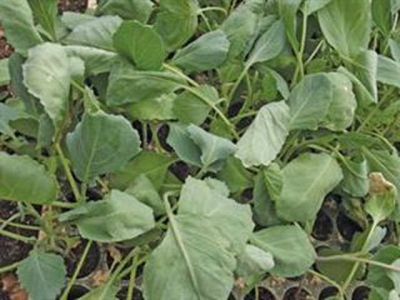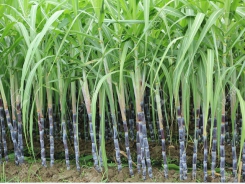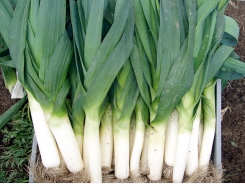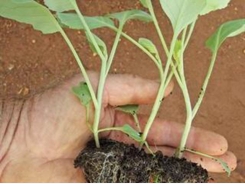How to harden seedlings

Seedlings need to be hardened to enable the plants to survive in the new environment where they are planted. But, as you will see, hardening has another advantage.
As a young vegetable farmer I worked on an enormous agricultural estate in the days before cavity seedlings. We had to make seedbeds which were flood irrigated. I would produce cabbage seedlings on 2 000 seedbeds about 3m long and 1m wide. The plants were lush and healthy and would be hardened by withholding water in the week before pulling.
Rain upset this process occasionally, but also provided a kinder climate in which to transplant. Transplants would wilt during the day, seeming to die, and then be ‘resurrected’ the following morning. Gradually, they started growing. This is what I was taught and it was a method that had been used on the estate for many years. Then a colleague who was the tobacco grower had spare seedbeds as he had finished planting his tobacco.
Sandy soil
Tobacco seedlings were planted in sandy soil and made very hard before transplanting into sandy soil once more, a requirement for flue-cured tobacco. He had sprinkler irrigation at this site and invited me to use his empty seedbeds. It wasn’t a large area and I sowed seed on these beds as a reserve.
Due to nitrogen leaching from the sand, the plants were pale and unattractive in comparison to my beautiful, green, regular seedlings, and I had no intention of using them. Then we had a spell of rainy weather and I transplanted every seedling which was large enough.
These included the tobacco seedbed plants – which I used reluctantly. When the sun came out, I was astonished when the bland-looking leathery plants from the tobacco beds bypassed the ‘play dead’ phase and started growing.
Energy reserves
I found that these hardened plants produced 1cm of roots in one day, whereas the other plants took nearly a week to produce roots that long. This was a valuable lesson for me and I began to understand how plants respond to their environment. When plants are hardened, they don’t only become physically hard, but they build up energy reserves that can be used when conditions improve.
This can be most beneficial. Hardening can be done by withholding water gradually, withholding nitrogen or by using temperature.
Withholding water is the easiest way if you can keep rain off the plants. Failing this, withholding nitrogen is the next best option. Without nitrogen, the plants can’t grow.
They’ll stay the same size and fill the leaves with starch to be used as energy later on. Plants can be kept for weeks in this condition and suffer very little harm. The problem is that when you do get the opportunity to use them or sell them, neither the leaves nor the roots will get going after transplant until they get nitrogen.
This can be avoided by administering a good dose of nitrogen before pulling the plants. It’s best to do this a few days before pulling, but can still be done just before pulling. More on the subject of plant hardening next week.
Related news
Tools

Phối trộn thức ăn chăn nuôi

Pha dung dịch thủy canh

Định mức cho tôm ăn

Phối trộn phân bón NPK

Xác định tỷ lệ tôm sống

Chuyển đổi đơn vị phân bón

Xác định công suất sục khí

Chuyển đổi đơn vị tôm

Tính diện tích nhà kính

Tính thể tích ao




 Understanding spray mixtures
Understanding spray mixtures  Know your seedling needs
Know your seedling needs